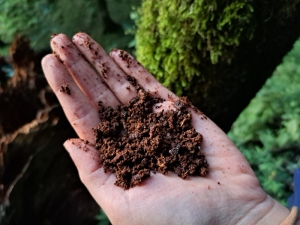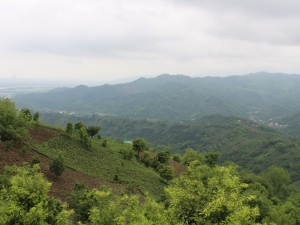
?What is Regenerative Agriculture
Chelsea Blakeley
Regenerative Agriculture is a system of farming and grazing practices that increase biodiversity, support soil remediation and fertility, and enhance water sheds. l
Regenerative Agriculture aims to reverse the current global trends of rapidly increasing atmospheric carbon accumulation by 1) Implementing carbon drawdown via root sequestration, and 2) Improving the water cycle. l
Planting a perennial and/or diversified rotation of crops encourages a regenerative ecosystem. Reduction in soil disturbance will support healthy root development of plants. Vibrant roots stabilize and hold organic matter and nutrients in place, and multiply the moisture-bearing capacity of soil; creating a foothold for biodiversity to flourish. l
The amount of carbon in the soil is a result of the interactions of several ecosystem processes, of which photosynthesis, respiration, and decomposition are essential. Photosynthesis fixes atmospheric CO2 into plant biomass. CO2 in the soil results both directly from growth and decay of plant roots, as well as indirectly from the transfer of carbon-enriched compounds from roots to soil microbes. l
Through the use of simple holistic agricultural processes large amounts of climate-altering carbon can be drawn from our atmosphere and sequestered back into the soil. l
A farmer can manipulate the natural contours of the soil to slow and “capture” rainfall as it moves through the landscape, bypassing the need for irrigation and slowing the loss of nutrients through water runoff and erosion; directing water flow to where it is most needed and least damaging to the land. Farmers can also collect and store rainwater from buildings. l
With the addition of strategically grazed livestock for weed suppression, the dispersal of decomposing organic materials, and manure input, a farmer can effectively eliminate the need for any additional synthetic chemical fertilizers for crops. This greatly reduces soil amendment costs for the farmer, and naturally boosts soil fertility and biodiversity. l
As such, with an increase in biodiversity comes an increase in allies: beneficial insects, nutrient-fixing plants, mycorrhizae, pollinators, etc. The presence of these helpful organisms can heavily mitigate the need to use fungicides, pesticides, and herbicides on crops. l
Regenerative agriculture focuses on building a self-sustaining ecosystem, without the need for synthetic external inputs. This drastically reduces costs for farmers, and lowers the amount of synthetic chemicals in circulation in an ecosystem. l
Humans can encourage earth’s natural capacity to balance, heal, and replenish itself. By adopting a holistic agriculture approach humans can build a more robust, divers, and complex ecosystem from which true abondance can thrive. When we work synergistically with our ecosystems we can affect our environment in a profoundly positive way. We have the means to reverse climate change, and it starts with something so simple-our soil. l
Now is the time for humans everywhere throughout the world to implement regenerative agriculture practices. Our future on this planet depends on it. l




